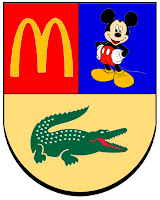En el Bajo Aragón son realmente pocos los pueblos que se salvaron de la destrucción voluntaria y sañuda de su patrimonio documental durante los años 30 del siglo pasado. En algunos perecieron los libros parroquiales, salvándose los del Registro Civil; en otros - menos - se salvaron los libros sacramentales pero se quemaron los del Registro. Y en algunos, se quemaron todos. Éste es el caso de Albalate del Arzobispo.
Sobra decir que para cualquiera que intente recomponer una genealogía que pase por el citado pueblo, el panorama no induce al optimismo. La única vía abierta es la que proporcionan los documentos referentes a Albalate y que no estuvieran en el pueblo en el momento fatídico. Así por ejemplo tenemos las matrículas de cumplimiento parroquial, atesoradas en el Archivo Diocesano de Zaragoza; y algunos otros, como por ejemplo la firma de infanzonía presentada por los Lucea a la Real Audiencia de Aragón entre 1757 y 1759. Este pliego ya ha sido sustancialmente transcrito y publicado por María del Pilar Lucea Parra en 1995, y en su artículo se traza la ascendencia de los Lucea hasta aproximadamente 1500.
Sobra decir que para cualquiera que intente recomponer una genealogía que pase por el citado pueblo, el panorama no induce al optimismo. La única vía abierta es la que proporcionan los documentos referentes a Albalate y que no estuvieran en el pueblo en el momento fatídico. Así por ejemplo tenemos las matrículas de cumplimiento parroquial, atesoradas en el Archivo Diocesano de Zaragoza; y algunos otros, como por ejemplo la firma de infanzonía presentada por los Lucea a la Real Audiencia de Aragón entre 1757 y 1759. Este pliego ya ha sido sustancialmente transcrito y publicado por María del Pilar Lucea Parra en 1995, y en su artículo se traza la ascendencia de los Lucea hasta aproximadamente 1500.
Aunque la gran mayoria de quienes habitaron en Albalate del Arzobispo han sido condenados al olvido perpetuo por la destrucción de los únicos documentos que les mencionaban, de vez en cuando la casualidad juega un papel decisivo en salvar algún retazo de la historia familiar; como por ejemplo, cuando una señora se pone de parto estando a un par de pueblos de su casa. En el cercano pueblo turolense de Alloza sobrevive un valiosísimo archivo parroquial y no sería de extrañar que, además del ejemplo que vamos a examinar, en ello se pudieran hallar otras partidas sueltas que ayudasen a documentar familias de pueblos cercanos cuyo patrimonio archivístico fué destruido.
En 1839, hallándose de paso, la esposa de uno de los Lucea ha dado a luz en Alloza; y pocos años más tarde, uno de los hijos mayores de la misma señora se afincó en Alloza, casándose con una chica natural del pueblo. Así, pues, gracias al Libro 6º de Bautizados de la parroquia de Alloza, podemos añadir esta breve rama al árbol de los Lucea infanzones:
I. Don José Lucea, natural de Albalate del Arzobispo, casó con Josefa Lahoz. Tuvieron por hijo - además, tal vez, de otros - a
II. Don Antonio Lucea, que casó con Josefa Izquierdo, también natural de Albalate del Arzobispo, hija de Miguel y de Manuela Torres. Tuvieron al menos 8 hijos, siendo la octava su hija María, bautizada en Alloza el 18 de mayo de 1839; y otro de los 8 fué
III. Don Celedonio Lucea, que casó con María Gazulla, natural de Alloza; tuvieron por hijas, además quizás de otras, a María; otra María, nacida en 1845; Paula; y Bernardina.
FUENTES: Revista "Colaboraciones", Nº 5, 1995, Pp. 77-101 - Archivo Parroquial de Alloza (Teruel) - Firma de Infanzonía de Pedro Lucea y Consortes, Archivo Histórico Provincial de Zaragoza, Sig. 241/B-2.









